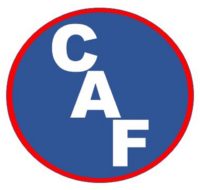What is the difference?
Both use the same formula – W + Conc + A + A = Foam (Bubbles)
The difference is in the air make up.
NAF uses low energy air at atmospheric pressure that is mixed in with the solution (W + Conc) at the nozzle and is also agitated at the nozzle. NAF bubbles are variable sizes and are generally larger and more fragile than CAF bubbles and cannot be thrown long distances. NAF streams are generally 20′ or less. The higher the EXPANSION, the dryer and more fragile the bubble.
CAF uses a compressor to add high energy (high pressure) air to the solution (W + Conc). This high energy air is added at the pump panel just before the Solution/Air mix enters the hose. The hose then provides the agitation. When properly scrubbed (agitated) by the hose lining, CAF produces millions of tiny strong bubbles that can be thrown long distances. On a 1-3/4″ line with a 15/16″ tip, CAF streams can be thrown 60-80 ft or more.

Both Foams make good wet and dry finished foams depending on the air input. The tiny CAF bubbles float further distances in air, and due to high energy air shear, CAF creates a large cloud of tiny floating bubbles.
Making Foam (Bubbles) is not Rocket Science. W + Conc (=Sol) + A + A = F (Bubbles). It’s a matter of understanding the nozzles and machines at each step to help firefighters make FOAM automatically, rapidly, and efficiently.





































